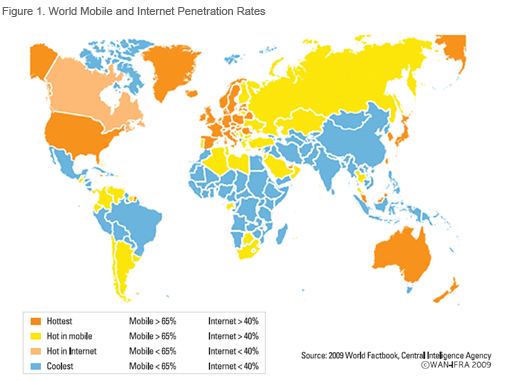A Future of Convergence?
As you can guess, today's debate lies on which technology has the most advantageous position. WiMAX is available now, but even Sprint and Clearwire's highest ranking executives have admitted that LTE might eventually become the dominant 4G technology throughout the world. That's not to say they are fighting an already lost battle. While they believe WiMAX has a lot of potential, and plan to continue pushing it, their decision to back this technology is all about timing. By the time LTE hits the market WiMAX will be available in at least twice as many cities.
On the other hand, GSM network standards dominate over 80% of the cellular markets worldwide, so it's only natural that most mobile operators will want to move to LTE, as it's rooted on the same technology they've worked with for over a decade – Verizon being the obvious exception with their network based on CDMA standards. Another important factor, as mentioned earlier, is that LTE requires significantly less infrastructure and thus will be cheaper to deploy.
Because both technologies are so similar there has been talk about them converging in the future. Clearwire CEO Bill Morrow emphasized this idea at the recent CTIA Wireless trade show, saying that the wireless industry should focus on the similarities between WiMAX and LTE rather than their differences. Motorola has added to this concept saying that they re-use much of its WiMAX technology when building LTE gear. Morrow envisions both technologies merging into one network standard, but even if that doesn't pan out, he says they can add LTE to their network if necessary.

Verizon was quick to express doubt this will ever happen, but ultimately it's up to the standards bodies and the driving forces behind them. Regardless if such convergence ever gains traction, for now WiMAX is at least a year ahead of LTE in terms of major commercial deployments and is moving full steam ahead. Clearwire will likely market WiMAX devices (and later on WiMAX 2) exclusively for the next 2-3 years, adding an LTE signal with minimal change to its antennas when – and if – the market demand is there as the LTE device ecosystem matures.
The leap to WiMAX in its current state is really more like going from dial-up to DSL. It's a nice speed gain, comparable to some of the lower-end home broadband plans, but more of an intermediate step to something much faster. In the short term that could be LTE. We'll have to reserve judgment until it's available commercially, but the fact remains neither technology will make users want to drop their speedy cable modem service just yet.
If you are not looking to do extremely demanding broadband usage, and spend most of your time within Clear's WiMAX coverage area, then the increased data speeds could be attractive for working at home or on the road without having to worry about finding a Wi-Fi hotspot. Sprint's upcoming HTC EVO handset might also play an important role in getting new customer sign-ups, as the first and probably only smartphone capable of 3-6Mbps download speeds that can also double as a portable Wi-Fi access point for as many as eight devices.